



Picture Scroll Enthusiasts
March 29 to May 14, 2017
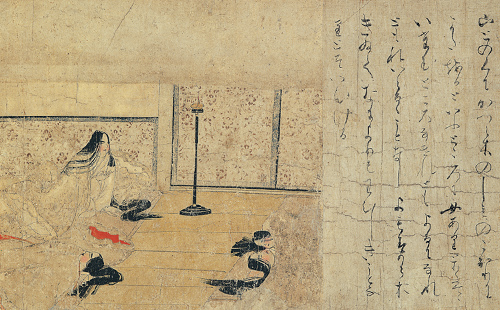
“Sleepless Woman” segment from Diseases and Deformities (Important Cultural Property)
Hanging scroll, Heian period (12th century)
Suntory Museum of Art
Picture scrolls, or e-maki, which blend literature and painting, are an art form original to Japan. Since the middle ages, they have constantly enthralled Japanese, and picture scroll enthusiasts, whose passion approached a mania, have emerged over and over again. This exhibition focuses on some of the classic examples, including the retired emperor Go-Shirakawa, Emperor Hanazono, and the aristocrat Sanjonishi Sanetaka. It examines the records they kept of their experiences while appreciating picture scrolls and other documents to reveal how these works were actually enjoyed. By seeking to gain an understanding of these men, powerful patrons as well as enthusiasts, this exhibition will introduce previously unexplored aspects of the context in which picture scrolls were created.
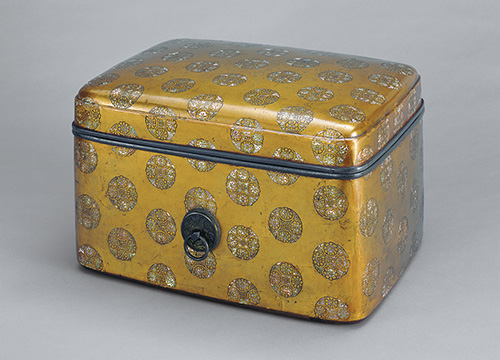
Box with fusenryo design in mother-of-pearl inlay and maki-e (National Treasure)
Kamakura period (13th century)
Suntory Museum of Art
A Sacred Treasure Box
The First Showing of the Box with Fusenryo Design in Mother-of-Pearl Inlay and Maki-e (a National Treasure) after Its Restoration
May 31 to July 17, 2017
Beautifully decorated “treasure boxes” like this box were not only the cherished possessions of their wealthy and high-ranking owners. They were also commissioned especially to be dedicated to the gods, and many examples survive today as shrine treasures. This exhibition takes as its starting point the Box with Fusenryo Design in Mother-of-Pearl Inlay and Maki-e (a National Treasure), which is being exhibited for the first time since its restoration, and also presents other surviving examples of such boxes, including treasures that have been preserved and handed down at famous shrines. This glorious array of sumptuous works displays the exquisite beauty of lacquer art gleaming with gold and mother of pearl.
A Wonderland of Japanese Art 2017
August 1 to August 31, 2017
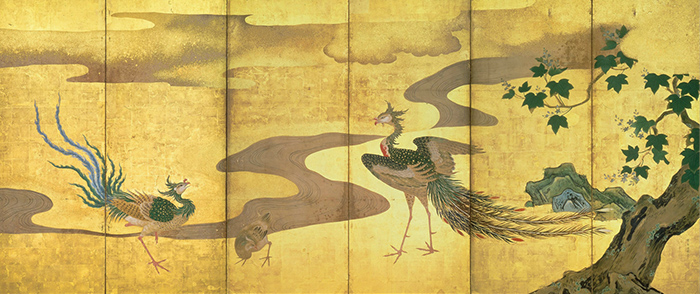
A museum is a place where you quietly look at works of art and savor them deep within yourself-yes, that is a lovely way to appreciate art. But this exhibition is a little different. Look, listen, talk about it, make your own-through an experiential format that engages your whole body, you’ll find unexpected starting points for an up-close-and-personal understanding of the fascination of famous works in the Suntory Museum of Art. Turn yourself into an art historian and analyze a folding screen. Describe out loud the motifs made of abstract forms. The key phrase here is “Knock, knock: Open the door to Japanese art!” Children or adults, all are welcome. Let’s set out together to explore the wonderland of Japanese art!
Phoenixes by Paulownia Trees
Kano Tan’yu, Pair of six-fold screens (Right hand screen)
Edo period (17th century)
Suntory Museum of Art
Kano Motonobu: All Under Heaven Bowed to His Brush
September 16 to November 5, 2017
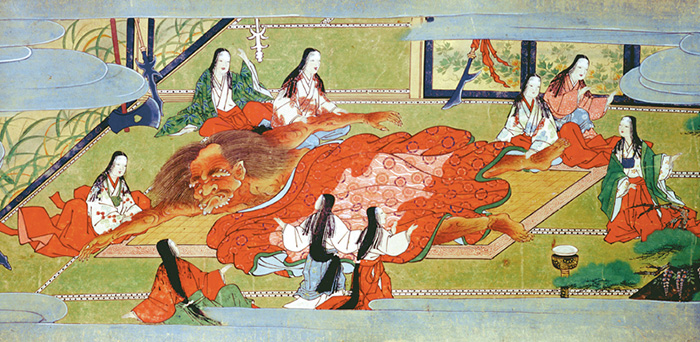
Kano Motonobu, who established the Kano school, lived in the Muromachi period. He systemized and built upon the brushwork styles of famous Chinese artists to create three styles of paintings: shin-gyo-so, or formal, semi-formal, and informal. By having his students master those examples, he created a studio system that assured the training of generations of Kano-school artists and also made possible studio projects executed through teamwork. In addition to the Chinese-style ink painting that had been the forte of his father, Masanobu, Motonobu also ventured into Yamato-e territory, broadening the school’s appeal and meeting a wide range of demand. This exhibition will focus on Motonobu’s oeuvre and the elements that enabled the Kano school, as an organization, to expand and become a powerful presence in Japanese art.
Conquest of Goblin Shutendoji (Important Cultural Property)
Kano Motonobu
Scroll three of three (detail), Muromachi period (dated 1522)
Suntory Museum of Art
Sèvres:
300 Creative Years Porcelain for the French Court
November 22, 2017, to January 28, 2018
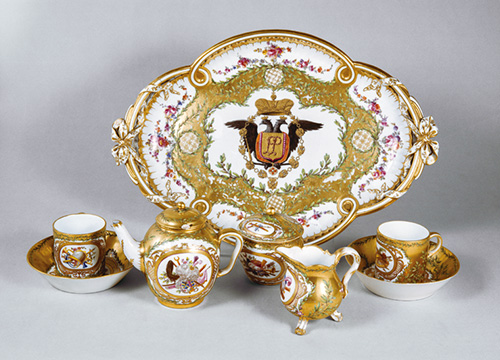
© RMN-Grand Palais (Sèvres, Cité de la céramique) / Droits réservés / distributed by AMF
Tea Service 1773; Sèvres, Cité de la céramique
The Sèvres porcelain factory began production during the reign of France’s King Louis XV and swiftly took the lead in both technique and design in European porcelain production. Loved by influential and powerful persons, including Madame de Pompadour, Queen Marie Antoinette, and Napoleon, Sèvres reigns today as one of Europe’s finest globally famous porcelain industries. This exhibition presents invaluable works from the Sèvres-Cité de la Céramique collection for an extraordinary opportunity to experience the glorious beauty and fascination of Sèvres porcelain.


